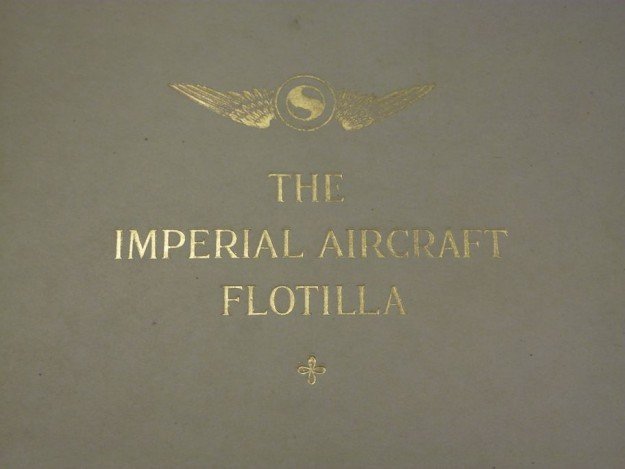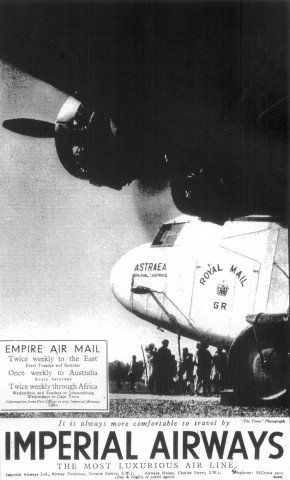The New Zealand government, despite its lack of a homegrown air arm, was little inclined to get involved in the Imperial Aircraft Flotilla. Even though a local Over-Seas Club president happened to have a seat in Cabinet, official participation was largely confined to forwarding money collected by New Zealand individuals and organisations to the Over-Seas Club headquarters in London. This was not because the government wasn't asked. In February 1915 Evelyn Wrench, the Honorary Secretary and Organiser of the Over-Seas Club in London, wrote to the New Zealand Minister for Defence, James Allen, explaining the purpose of what was at this time called the Over-Seas Aircraft Fund. He pointed out that it had been approved by the Army Council and quoted a letter from Lewis Harcourt, the Secretary of State for the Colonies, giving his endorsement.1 A pamphlet was included which pointed out that 'In view of the superhuman efforts which Germany is making to establish a mastery of the air' and 'the official German statement that the Yarmouth raid is only the precursor of many such exploits, every Aeroplane which we can provide will be needed'.2 Wrench's 'appeal to the people of New Zealand' to provide £2250 for a 'Vicker's Gun Biplane', to be 'definitely associated with the Dominion and the fact that it has been contributed by the residents of New Zealand would be painted on the machine' was considered by Cabinet in May.3 However, Allen's reply was that his colleagues 'cannot see their way to take any action in view of the tremendous demands that are being made upon the country during this war time'.4
There was a further approach in August, this time from Horace H. Hunt of the Auckland branch of the Over-seas Club. Hunt wrote to the Minister for Munitions, A. M. Myers, who just happened to be the president of the same branch. Hunt enclosed further literature and endorsements of what was now called the Over-Seas Aircraft Flotilla. This time, however, the idea was that the aircraft in question would be built in New Zealand and sent to Britain. Hunt noted that he had been in contact with 'the firm of Messrs. Walsh Brothers, who have for some time been manufacturing Seaplanes, and who have opened an Aviation School at Orakei'. Given that Walsh Brothers 'have received official recognition from the New Zealand Government' and 'have machinery etc on order for the complete outfitting of Seaplanes', Hunt seemed to be suggesting that the government should facilitate the establishment of a native New Zealand aircraft industry under the auspices of the Over-Seas Club.5 Myers passed this on to Allen, who again demurred. His argument this time was that 'it would be extremely difficult to see that any Aeroplane provided was up to the proper standard for use on active service, since there is no competent aviation engineer in the Dominion'. He also somewhat peevishly pointed out that the government had not given 'official recognition' to Walsh Brothers, having 'only undertaken to appoint officers to observe flights in accordance with the requirements of the Royal Aero Club's conditions for the granting of Pilots' Certificates'.6
Of course there was nothing stopping private contributions to the Fund, and the government sometimes got involved in these transactions as an intermediary. The earliest correspondence of this kind, though, was actually from Wrench in London asking if the New Zealand Commissioner in Britain, Sir Thomas Mackenzie, could chase up funds which he had been promised by the Napier branch of the Over-Seas Club for an 'Aeroplane to be called HAWKES BAY, New Zealand' but which had never turned up.7 In October, this donation got mixed up with another one for £136/10/6 from readers of the Taranaki Herald and Budget, a mistake which was not realised until February 1916 (it turned out that the Hawkes Bay money had been forwarded to the Over-Seas Club in London via the Bank of New Zealand in September 1915).8
Wrench kept the New Zealand government informed of developments. When the Over-Seas Aircraft Flotilla became the Imperial Aircraft Flotilla in late 1915, it consisted of 50 aeroplanes, all of them 'at the front, and hard at work'.9 In June 1916, he sent a booklet, The Imperial Aircraft Flotilla, directly to the Prime Minister, W. F. Massey, along with a further appeal, given 'the enormous wastage of aircraft' in the war', to 'definitely to associate your community with the Royal Flying Corps by the presentation of an aeroplane, or aeroplanes through us, named after the donors'.10 Massey read, or claimed to have read, the booklet 'with interest' and directed Allen 'to give careful consideration to the appeal for further machines from this country'.11 Allen's subsequent letter to Wrench must have confused him, for despite acknowledging that the Flotilla machines 'have materially assisted in securing for us the supremacy in the air', it contained no reference to any future donations which might be forthcoming from New Zealand. Instead it discussed past gift aeroplanes: the Britannia aeroplane, which had been given by the New Zealand government early in the war, though not through the Over-Seas Club; and the Hawke's Bay and Poverty Bay machines.12
Allen's further comment that there did not appear to be 'any record of the Union Steamship Company of New Zealand having presented a machine through the Over-Seas Club' must have further confused matters, since on the one hand neither Wrench nor The Imperial Aircraft Flotilla mentioned any such thing; but on the other, this gift had in fact actually taken place.13 The explanation given by the Union Company's managing director, Charles Holdsworth, is interesting:
IT HAS RECENTLY BEEN SAID THAT "IN THE LAST RESORT THE RIGHT TO LIVE FREELY AND INDEPENDENTLY WILL BE WON AND SECURED BY NATIONS IN THE AIR
AS SOME THREE YEARS AGO THE COMPANY RECOGNISED THAT THOUGH AVIATION WAS IN THE EXPERIMENTAL STAGE DEVELOPMENTS MIGHT BE VERY RAPID AND IT MIGHT BECOME A PRACTICAL MEANS OF TRANSPORT THEY ACCORDINGLY INCLUDED AIR SERVICES AS ONE OF ITS OBJECTS IN THE MEMORANDUM OF ASSOCIATION
THE DIRECTORS OF THE COMPANY HAVE NOW DECIDED TO GIVE EFFECT TO THIS OBJECT BY THE PURCHASE OF AN AEROPLANE WHICH THEY DESIRE TO OFFER TO THE NEW ZEALAND GOVT. FOR SUCH USE IN THE PRESENT DEVASTATING WAR AS MAY BE DEEMED BEST BY THE GOVT"14
The quotation is from a leading article in the London Spectator (supporting, incidentally, Montagu of Beaulieu's call for, eventually, an independent air service, itself partly inspired by the Imperial Aircraft Flotilla), in which it is declared that 'every State, small and great, has, and must be surrounded for all time by, the circumambient air, and so is a potential Air Power'.15 It's also interesting that already in 1913 (or so) the Union Company was airminded enough to foresee a time when it might have to ship people and goods by air, not just by sea (where it was already formidable). Finally, the description of the phrase 'the present devastating war' adds a strikingly pessimistic note. Myers, this time in his role as Auckland Over-Seas Club president, suggested that this aeroplane be donated as part of the Imperial Aircraft Flotilla, which the Union Company's directors were happy to go along with.16 The further wish that the aeroplane be named Maori (the first choice, Wahine, was already in service, though with the Flotilla or not is unclear) was agreed to by Britain, but the idea of giving it to a New Zealand airman was scotched 'as officers Royal Flying Corps have to serve as and when required'.17
Should the government have done more to encourage the Imperial Aircraft Flotilla in New Zealand? Perhaps. Interest in the Flotilla seems to have waned towards the end of the war, with the last press mention coming in June 1917.18 As of March 1917, New Zealand had contributed five machines (Hawke's Bay, Poverty Bay, Dunedin, Otago, Auckland; though this doesn't include Wahine or Maori, and at least one more was donated in March 1918, thanks to a £1500 contribution by E. R. Jackson: Wanganui).19 Australia was then reported to have given at least 30 machines, which is a bit more per capita than New Zealand, but not too much.20 Even if a seaplane production line had been set up by Walsh Brothers, it's hard to see how it would have been more efficient than simply sending money to Britain to build aircraft there, where there was expertise and economies of scale. It wouldn't have been viable after the war, either.
There is one remaining what-if, though. After hearing of the Union Company's £2250 donation, Charles Trinder of Sumner wrote to Massey in June 1916 to ask if he would instead 'devote that sum to an Aerial Dreadnought whose potentialities, owing to original features, are so great as to enable its possessor to decide the issue of the war?' Naturally Trinder, as its inventor, wrote this 'in no spirit of idle boast' and was capable carrying out his claims 'to the letter'.21 Sadly, though, Massey had to inform Trinder that the money had already been spent; and so the chance to end the war two years early was lost...22
![]() This work is licensed under a Creative Commons Attribution-NonCommercial-NoDerivatives 4.0 International License.
Permissions beyond the scope of this license may be available at http://airminded.org/copyright/.
This work is licensed under a Creative Commons Attribution-NonCommercial-NoDerivatives 4.0 International License.
Permissions beyond the scope of this license may be available at http://airminded.org/copyright/.
- Archives New Zealand [ANZ]: AAYS 8638 AD1/920 46/62/128, letter, Evelyn Wrench, 22 February 1915. [↩]
- Ibid., 'The Over-Seas Aircraft Fund', n.d. [1915]. [↩]
- Ibid., letter, Evelyn Wrench, 22 February 1915. [↩]
- Ibid., letter, James Allen, 21 May 1915. [↩]
- Ibid., letter, [Horace H. Hunt], 27 August 1915. [↩]
- Ibid., letter, James Allen, 10 September 1915. [↩]
- Ibid., Evelyn Wrench, 27 August 1915. [↩]
- Ibid., letter, Henry Weston, 1 October 1915; ibid., letter, J. Hislop (Under Secretary, Department for Internal Affairs), 14 February 1916; ibid., letter, V. Kennedy (secretary, Over-Seas Club, Napier), 16 February 1916. [↩]
- Ibid., letter, John Evelyn Wrench, 15 December 1915. [↩]
- Ibid., letter, John Evelyn Wrench, 26 June 1916. Emphasis in original. [↩]
- Ibid., letter, W. F. Massey, 24 August 1916. [↩]
- Ibid., letter, J. Allen, 2 September 1916. [↩]
- Ibid. [↩]
- ANZ: AAYS 8638 AD1/920 46/62/320, telegram, Charles Holdsworth, 24 May 1915; line breaks added for clarity. [↩]
- Spectator (London), 25 March 1916, 4. [↩]
- ANZ: AAYS 8638 AD1/920 46/62/320, memorandum, Arthur M. Myers, 25 May 1916; letter, C. Holdsworth, 13 June 1916. [↩]
- Ibid., telegram, Bonar Law (Secretary of State for the Colonies), 16 July 1916. [↩]
- Poverty Bay Herald (Gisborne), 9 June 1917, 5. [↩]
- Auckland Star, 7 March 1917, 8; ANZ: ADRK 17391 T1/208 23/87/3, memorandum, G. F. C. Campbell (Secretary to the Treasury), 6 March 1918. [↩]
- Auckland Star, 7 March 1917, 8. [↩]
- ANZ: AAYS 8638 AD1/920 46/62/320, letter, Chas. R. Trinder, 23 June 1916. [↩]
- Ibid., letter, W. F. Massey, 28 June 1916. [↩]





Conrad
Congratulations on the book!
There's a replica of the Hawke's Bay machine in Masterton. A re-enactment of the handover ceremony was a centrepiece at the local airshow earlier this year.
http://www.nzherald.co.nz/hawkes-bay-today/news/article.cfm?c_id=1503462&objectid=11208996
Brett Holman
Post authorThanks -- the reenactment was mentioned in a comment on the previous post but without a photo!
Pingback:
Malaya XV | Airminded